- Home
- Jane Austen
Sense and Sensibility (Barnes & Noble Classics Series) Page 2
Sense and Sensibility (Barnes & Noble Classics Series) Read online
Page 2
Austen was influenced by the writers of her youth. She adored Samuel Richardson, read Maria Edgeworth, Sir Walter Scott, Dr. Johnson, Alexander Pope, William Cowper, Henry Fielding, and Daniel Defoe, and recited passages from Fanny Burney aloud (Gay, Jane Austen and the Theatre, p. 11). In Sense and Sensibility Austen echoes earlier novelists while at the same time anticipating the format of the nineteenth-century novel. Austen’s choice of translating “Elinor and Marianne” from an epistolary narrative (a novel in letters) into a story told by a central narrative allowed her to juxtapose the internal and external facets of her heroines. What we see Elinor do is often contrasted with what we know she is thinking. This gap between thought and action is highlighted repeatedly throughout the novel.
Marianne and Elinor have very different ideas about what they can and should reveal about their private thoughts. When Elinor pleads with Marianne to give her the details of her secretive relationship with the deceiving Willoughby, Marianne retorts: “Our situations then are alike. We have neither of us any thing to tell; you, because you communicate, and I, because I conceal nothing” (p. 138). What Marianne implies is that Elinor’s mode of communication, while utterly proper and correct, is always veiled and restrained. When pressed about her feelings for Edward, Elinor replies: “I meant no offence to you, by speaking, in so quiet a way, of my own feelings. Believe them to be stronger than I have declared” (p. 18). In Austen’s world women cannot communicate effectively without revealing too much. They are left to perfect the art of innuendo, leading questions, and disguised sentiments. The slippery properties of language become a heroine’s greatest weapon. At the same time, a misunderstood phrase or rumor can cause her downfall.
The plot of Sense and Sensibility opens with the anxiety of displacement and disenfranchisement. The Dashwood sisters have just lost their father and have been forced out of their home by their conniving sister-in-law. Austen’s initial descriptions of Elinor and Marianne focus on their reactions to this financial crisis:
Elinor, this eldest daughter whose advice was so effectual, possessed a strength of understanding, and coolness of judgment, which qualified her, though only nineteen, to be the counsellor of her mother.... She had an excellent heart; her disposition was affectionate, and her feelings were strong: but she knew how to govern them: it was a knowledge which her mother had yet to learn, and which one of her sisters had resolved never to be taught (p. 6).
Elinor’s ability to rule her emotions and provide rational, intelligent analyses of all situations puts her in sharp contrast to Marianne, who “was sensible and clever, but eager in everything; her sorrows, her joys, could have no moderation. She was generous, amiable, interesting: she was everything but prudent” (p. 6).
Echoing contemporary enlightenment debates on the relative merits of reason versus emotion, Austen’s sisters epitomize a shift in attitudes from the late eighteenth to the beginning of the nineteenth century. Philosophers such as Mary Wollstonecraft, William Godwin, and Thomas Paine championed the rights of individuals rationally to govern themselves. Wollstonecraft, in her Vindication of the Rights of Woman (1792), critiqued the ways women were educated in the late eighteenth century and brought up to believe that their only asset was their beauty and seductive charms. She writes: “But in the education of women, the cultivation of the understanding is always subordinate to the acquirement of some corporeal accomplishment” (Wollstonecraft, p. 105) . While Austen is not considered a radical novelist, in her depiction of the educated, pragmatic Elinor she moves away from the more feminine preoccupations of popular eighteenth-century heroines such as Fanny Burney’s Evelina and Samuel Richardson’s Pamela. Elinor must concern herself with matters of the real world (money, lodgings, familial relationships and obligations) at the same time that she is secretly negotiating her feelings for Edward. Elinor’s calm and collected demeanor masks her internal dialogue, a contrast that would become the hallmark of Austen’s later heroines Elizabeth Bennet (Pride and Prejudice), Fanny Price (Mansfield Park), and Anne Elliot (Persuasion). In fact, Elinor’s desire to hide and master her true feelings is a necessity. If she weren’t there to organize her emotional mother and dreamy sister, nothing would get done. During the move from Norland, “Elinor, too, was deeply afflicted; but still she could struggle, she could exert herself. She could consult with her brother, could receive her sister-in-law on her arrival, and treat her with proper attention: and could strive to rouse her mother to similar exertion, and encourage her to similar forbearance” (p. 6).
The terms “sense” and “sensibility” have roots in eighteenth-century literary culture. Sentimental novels of the mid-eighteenth century such as Henry Mackenzie’s Man of Feeling and Samuel Richardson’s Clarissa stressed the importance of a moral code through the trials and tribulations of the protagonists. Later in the century, novels and poetry of “sensibility,” featuring connections between nature and emotion, provided readers with new ways to view literature as both entertaining and instructive. Although Austen links Elinor with sense, which the Oxford English Dictionary defines as “natural understanding and intelligence,” Marianne’s acute sensibility, “the quality of being easily and strongly affected by emotional influences,” is equally compelling and necessary. Marianne’s affinity for art and literature and her willingness to be swayed by her emotions are qualities that link her to eighteenth-century notions of sensibility that emphasized, according to the OED, “delicate sensitiveness of taste; also readiness to feel compassion for suffering, and to be moved by the pathetic in literature and art.” Elinor’s propriety and self-restraint can be seen as a corrective to Marianne’s tempestuous theatrics. Yet it is Marianne who moves the story along and ultimately steals the show.
While Mansfield Park is the Austen novel most often connected to questions of the theater and theatricality, Sense and Sensibility is also a work that relies on theatrical conceits. Austen’s attention to theatrical details reflects her perception of her readers as audience members. She read all of her manuscripts aloud to her family, and it was through their encouragement that she managed to publish her work (Tomalin, p. 121). Austen also experimented with theatrical writings. Some of her earliest works were plays, and she may have performed in private stage productions. She regularly attended the theater and admired the leading actors and actresses of her day. In a letter written to her sister, Cassandra, on April 25, 1811, Austen discusses her anxiety about Sense and Sensibility’s public reception: “I am very much gratified by Mrs. K’s interest in it. I think she will like my Elinor, but cannot build on anything else.” She then goes on to evaluate the musical performances at a party she attended, explaining: “There was one female singer, a short Mrs. Davis all in blue ... & all the Performers gave great satisfaction by doing what they were paid for & giving themselves no airs.” The letter concludes with details of her trip to the Lyceum Theatre to see Isaac Bick erstaffe’s The Hypocrite and her disappointment at missing Sarah Siddons, the most famous actress of the era, playing Constance in Shakespeare’s King John: “I had no chance of seeing Mrs. Siddons. I should particularly have liked to see her in Constance & could swear at her with little effort for disappointing me” (Le Faye, Jane Austen’s Letters, p. 184). Clearly, watching, critiquing, and analyzing various types of performances was a vital part of Austen’s life, particularly around the time of Sense and Sensibility’s publication. Although Austen has often been considered a reclu sive, quiet literary figure, her letters suggest that she was very much a part of the goings-on in her social world—a world that involved attending the theater, visiting art exhibitions, and shopping in fashionable London neighborhoods.
Austen may have enjoyed the theatre and been interested in specific actors and actresses, but her critique of display and artifice reflects a transition between eighteenth-century and nineteenth-century literary tastes. In her early writings, and later in Northanger Abbey, Austen parodies typically dramatic eighteenth-century characters, such as the libertine, the sentimental, and
the Gothic heroine, along with conventional eighteenth-century plotlines: thwarted romance, abduction, intrigue, and exaggerated, implausible events. Aspects of these types of eighteenth-century narratives are in Sense and Sensibility, but they all occur offstage. Colonel Brandon’s stories about his former lover Eliza—her demise and Willoughby’s seduction of her daughter—are episodes that serve as cautionary tales dramatizing the consequences that befall women who behave improperly. On the main stage of the novel this sort of acting out is contained, but the subtleties of disguise and satire, emphasized by descriptions of behavior, gesture, costume, and staging, are central to the progression of the narrative. The plot structure relies on theatrical conceits—pairs of characters, parallel story lines, staged scenes, groups of characters thrown together in awkward situations, misidentifications, and dramatic monologues.
Some of the best moments in the novel are scenes of dramatic confusion. The awkward exchange during which Mrs. Jennings expresses her belief that Elinor is engaged to Colonel Brandon; Colonel Brandon’s entrances when Marianne expects Willoughby ; and Edward’s ill-timed visit to Elinor when she is already entertaining Lucy, are moments of misrecognition that lead up to the final moment when Edward arrives at Barton Cottage to inform Elinor that he is, in fact, not married. Austen deliberately plays with the pleasures of dramatic irony and suspense, thus highlighting the importance of uncertainty—a state that Elinor finds unbearable. She would rather not entertain the notion of probabilities until they are specifically stated and explained. This preference has as much to do with her notions of proper behavior as with her attempt to protect herself from disappointment.
Austen’s exploration of the pitfalls and possibilities of theatrical expression is illustrated in her portrayal of Marianne. Marianne is a natural actress in the sense that she is demonstrative and expressive—sighing, swooning, laughing, vehemently declaring opinions. She is unable to hide her passionate feelings. She is always the primary performer in her own story. She takes center stage and commands the audience’s attention. She has no patience for characters who cannot act well or do not appear in the right costumes. She is embarrassed by Edward’s attempts to read poetry, and her initial reaction to Colonel Brandon is disgust at his propensity for wearing flannel waistcoats.
Despite her flair for the dramatic, Marianne is actually a terrible actress, because she is incapable of deception and duplicity. She is so easy to read and decipher because her emotions and moods have physiological manifestations. After Marianne sees Willoughby with his new mistress, she is inconsolable: “The restless state of Marianne’s mind not only prevented her from remaining in the room a moment after she was dressed, but requiring at once solitude and continual change of place, made her wander about the house till breakfast-time, avoiding the sight of every body” (p. 147). Marianne’s feelings lead her to improper actions, such as going on a private tour of Willoughby’s home, Allenham, and writing him letters without an agreement between them. Her lack of restraint leads to devastating disappointment and a near-fatal illness.
Marianne’s theatrical tendencies and her subsequent nervous collapse have interesting historical corollaries. Acting techniques of the late eighteenth century, introduced by the actor and theater manager David Garrick and perfected by actresses such as Sarah Siddons, emphasized connections between emotions and specific expressions and gestures. Marianne’s “dreadful whiteness,” “inability to stand,” “frequent bursts of grief,” and “desperate calmness” may have been visually inspired by Austen’s trips to the theater to see actresses in popular tragic roles. A preoccupation with madness, love, and death was prevalent in many eighteenth-century novels. The plight of these heroines reflects the eighteenth-century belief that women were particularly susceptible to maladies caused by unchecked passions and violent attachments. A popular eighteenth-century diagnosis of madness focused on the state of an individual’s nerves, a condition that was diagnosed by observing the subject’s behavior. This condition of anxiety and agitation became known as “the English malady.” Marianne’s reaction to disappointment in love would have been familiar to eighteenth-century readers, but her recovery and decision to transform herself into a dutiful wife seems to be Austen’s revision of an older plot device.
Elinor is not a theatrical character. She is controlled and cool, but not naturally so; therefore she must be an excellent actress in order to contain and disguise her emotions and the exuberance of her imagination. She must tell herself to calm down, berating herself for having any expectations until she is absolutely sure that Edward loves her. In contrast to Marianne, who cannot subdue her feelings—“But to appear happy when I am so miserable—oh, who can require it?” (p. 155), Elinor must wait to be left alone so she can be “at liberty to think and be wretched” (p. 111). In this way Elinor’s world is more self-reflective and divided than Marianne’s; she must have an outward self and a private self to survive. As the audience, we can watch her on both stages and see what is at stake in each.
In its attention to dialogue, modes of expression, and the dilemma of how to communicate effectively, Sense and Sensibility examines the value of everyday language. In the world of the novel the characters who speak the most are portrayed as gossipy, boring, and sometimes devious. In fact, the novel is full of women talking, sometimes cruelly, sometimes affectionately, but mostly to fill the silent gaps in conversation left by the much less verbal men. With characteristic wit Austen writes:
John Dashwood had not much to say for himself that was worth hearing, and his wife had still less. But there was no peculiar disgrace in this; for it was very much the case with the chief of their visitors, who almost all laboured under one or other of these disqualifications for being agreeable—want of sense, either natural or improved—want of elegance—want of spirits—or want of temper (pp.191-92).
Mrs. Jennings, Mrs. Palmer, and Lady Middleton speak endlessly about their children or the goings-on in the neighborhood. The relationship between doting mothers and their children are par odied in scenes where Elinor and Marianne are forced to endure afternoons with unruly offspring. Elinor observes Lady Middleton’s inability to discipline her darlings:
She saw with maternal complacency all the impertinent encroachments and mischievous tricks to which her cousins submitted. She saw their sashes untied, their hair pulled about their ears, their work-bags searched, and their knives and scissors stolen away, and felt no doubt of its being a reciprocal enjoyment. It suggested no other surprise than that Elinor and Marianne should sit so composedly by, without claiming a share in what was passing (p. 99).
Interestingly, the children’s antics here deliberately dismantle the trappings of late eighteenth-century femininity. The Miss Steeles endure being undressed, “their sashes untied, their hair pulled about their ears,” searched, and deprived of their domestic weapons—knives and scissors—used in female employments such as embroidery and sewing. Elinor and Marianne’s lack of participation provides them with an ironic distance in this domestic drama; neither seems interested in playing traditional female roles. It follows, then, that women in the novel have trouble understanding the Dashwood sisters. As for Lady Middleton, “because they neither flattered herself nor her children, she could not believe them good-natured; and because they were fond of reading, she fancied them satirical: perhaps without exactly knowing what it was to be satirical; but that did not signify. It was censure in common use, and easily given” (p. 201). Not only is Lady Middleton incapable of sympathizing with Elinor and Marianne, but she has no real idea of the meaning of her characterization of them. Lady Middleton’s role as a typical upper-class woman of her time seems a pointed critique of the ways women misuse and misunderstand language.
Often tidbits of female news have a direct impact on Elinor or Marianne. After the debacle with Willoughby, Mrs. Palmer notes all the material particulars of his new match: “She could soon tell at what coachmaker’s the new carriage was building, by what painter Mr. Willoughby�
�s portrait was drawn, and at what warehouse Miss Grey’s clothes might be seen” (p. 176). Through Mrs. Palmer’s preoccupation with the material goods that signify engagements—carriages, portraits, clothes—Austen suggests Willoughby’s union with Miss Grey is not based on any real emotion or connection, but on social conventions and pressures. In addition, the gossipy voice of Mrs. Palmer provides Austen with a way of satirizing society’s desire for novelties and anecdotes at the expense of more significant or intangible concerns.
In Sense and Sensibility it is the characters with the least sense who get the most airtime and those with the most important news who are ignored. Colonel Brandon, perhaps the most substantial male character in the novel, is described by his rival Willoughby as someone “whom every body speaks well of, and nobody cares about; whom all are delighted to see, and nobody remembers to talk to” (p. 42). Marianne comments on the fact that women are not supposed to talk about anything of interest: “I have been too much at my ease, too happy, too frank. I have erred against every common-place notion of decorum; I have been open and sincere where I ought to have been reserved, spiritless, dull, and deceitful:—had I talked only of the weather and the roads, and had I spoken only once in ten minutes, this reproach would have been spared” (p. 40) .
Characters that have a grasp of the devastating possibilities of language are particularly dangerous. The second chapter of the novel is an extended dialogue between John Dashwood and his wife on the relative merits of bequeathing an allowance to his sisters. By manipulating his sentiments and cleverly managing her own agenda, Mrs. Dashwood succeeds in ensuring that the Dashwood sisters are left with next to nothing. At one point she declares, “Altogether, they will have five hundred a year amongst them, and what on earth can four women want for more than that? They will live so cheap! Their housekeeping will be nothing at all. They will have no carriage, no horses, and hardly any servants ; they will keep no company, and can have no expenses of any kind! Only conceive how comfortable they will be!” (p. 10). Mrs. Dashwood is just one of the many female characters in the novel who use the subtle art of dialogue to further their own causes.

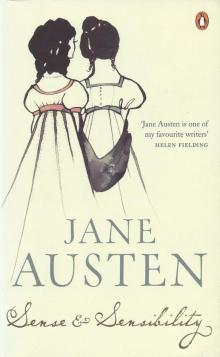 Sense and Sensibility
Sense and Sensibility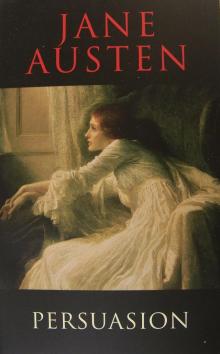 Persuasion
Persuasion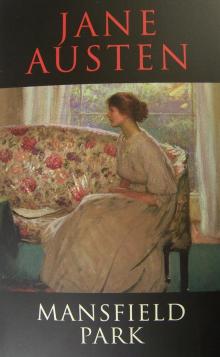 Mansfield Park
Mansfield Park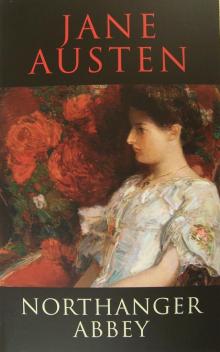 Northanger Abbey
Northanger Abbey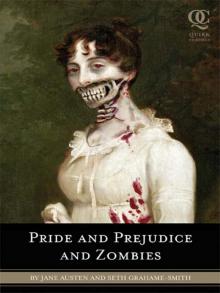 Pride and Prejudice and Zombies
Pride and Prejudice and Zombies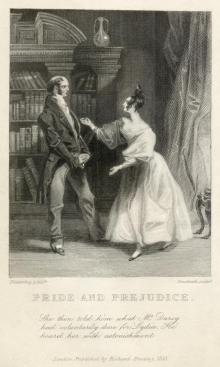 Pride and Prejudice
Pride and Prejudice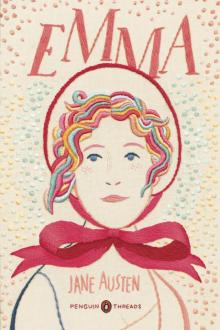 Emma
Emma Persuasion (Dover Thrift Editions)
Persuasion (Dover Thrift Editions)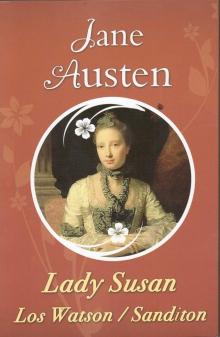 Lady Susan
Lady Susan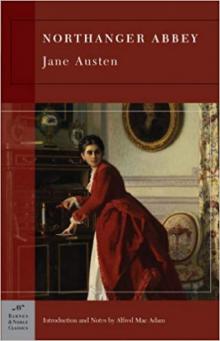 Northanger Abbey (Barnes & Noble Classics)
Northanger Abbey (Barnes & Noble Classics)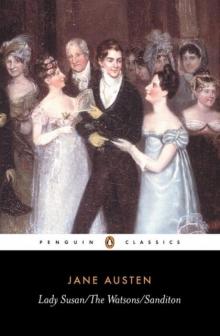 Lady Susan, the Watsons, Sanditon
Lady Susan, the Watsons, Sanditon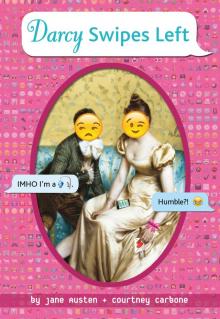 Darcy Swipes Left
Darcy Swipes Left Persuasion: Jane Austen (The Complete Works)
Persuasion: Jane Austen (The Complete Works)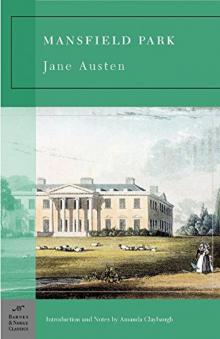 Mansfield Park (Barnes & Noble Classics Series)
Mansfield Park (Barnes & Noble Classics Series)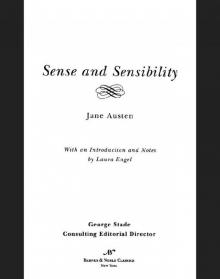 Sense and Sensibility (Barnes & Noble Classics Series)
Sense and Sensibility (Barnes & Noble Classics Series) The Annotated Sense and Sensibility
The Annotated Sense and Sensibility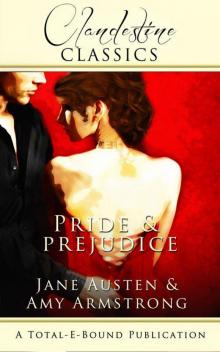 Pride and Prejudice (Clandestine Classics)
Pride and Prejudice (Clandestine Classics)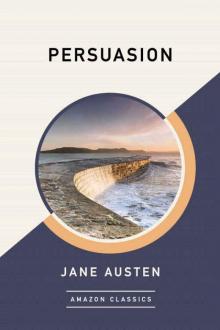 Persuasion (AmazonClassics Edition)
Persuasion (AmazonClassics Edition)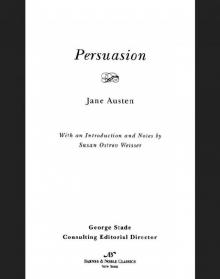 Persuasion (Barnes & Noble Classics Series)
Persuasion (Barnes & Noble Classics Series)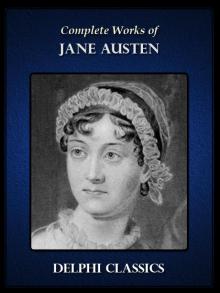 Complete Works of Jane Austen
Complete Works of Jane Austen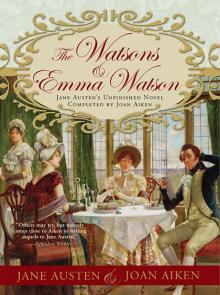 The Watsons and Emma Watson
The Watsons and Emma Watson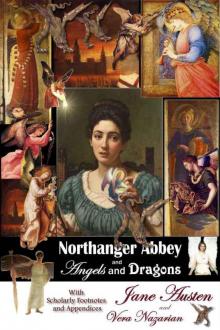 Northanger Abbey and Angels and Dragons
Northanger Abbey and Angels and Dragons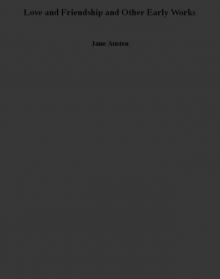 Love and Friendship and Other Early Works
Love and Friendship and Other Early Works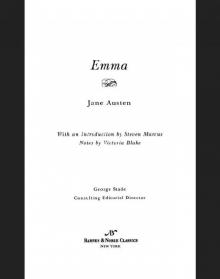 Emma (Barnes & Noble Classics Series)
Emma (Barnes & Noble Classics Series)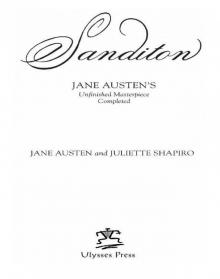 Sanditon
Sanditon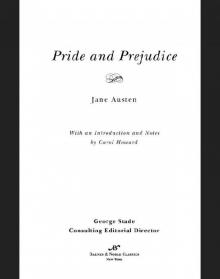 Pride and Prejudice (Barnes & Noble Classics Series)
Pride and Prejudice (Barnes & Noble Classics Series)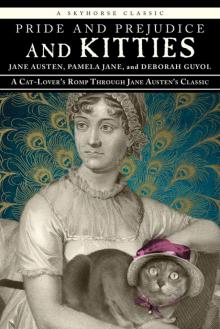 Pride and Prejudice and Kitties
Pride and Prejudice and Kitties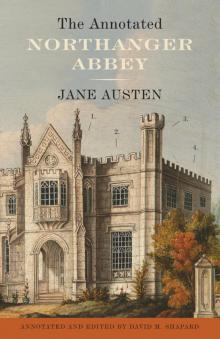 The Annotated Northanger Abbey
The Annotated Northanger Abbey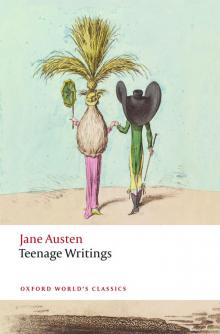 Oxford World’s Classics
Oxford World’s Classics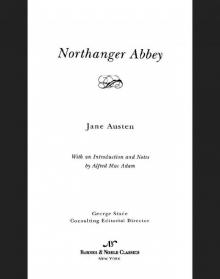 Northanger Abbey (Barnes & Noble Classics Series)
Northanger Abbey (Barnes & Noble Classics Series)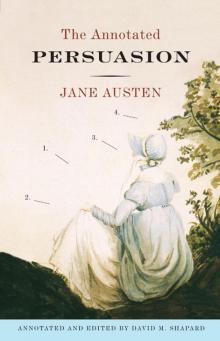 The Annotated Persuasion
The Annotated Persuasion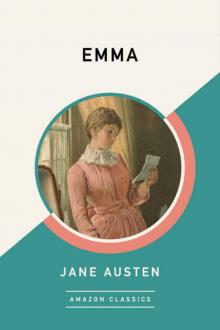 Emma (AmazonClassics Edition)
Emma (AmazonClassics Edition)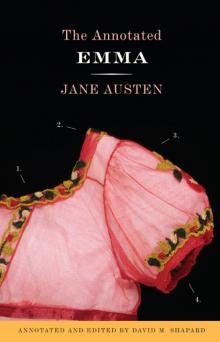 The Annotated Emma
The Annotated Emma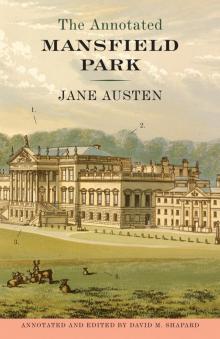 The Annotated Mansfield Park
The Annotated Mansfield Park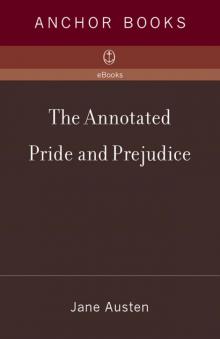 The Annotated Pride and Prejudice
The Annotated Pride and Prejudice